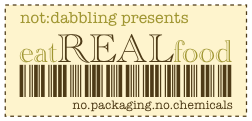
One of the ways I've been dealing with this year's harvests is by unloading some of them on my son and his roommates. I gave them a large bag of snow peas a couple of weeks ago and was dismayed, and somewhat surprised, to hear that they hadn't eaten them yet because "we don't know how to cook them."
This is one of the things that you forget when you've been cooking for more than 40 years. There was, in fact, a time when I would not have known how to do something as basic as cook fresh vegetables. So here's a small tour and tutorial on cooking and eating fresh, and of course, a recipe.
First let me say that I'm not against preserved vegetables. Blanching and flash freezing vegetables is one of the best ways to preserve their nutrition and flavor, and even canned vegetables have their place (one of my guilty pleasures is canned creamed corn). Plus, that's where a lot of the garden bounty goes-- into preservation. But fresh vegetables, even the lip-service fresh vegetables in the grocery store, have better texture, and are more versatile, than any preserved ones.
Really fresh vegetables-- farmers' market or better yet backyard garden are something else again. First of all, if you rinse them, put them damp into a zip lock bag with the air squeezed out and stick them right in the fridge, they will keep longer than you think possible. I've had hand picked lettuce come out of a bag still crisp and fresh after a month. You won't get that from the grocery store. So I'm not too worried that J and his friends haven't eaten the peas yet; they're probably fine.
So what do you do with them? Well, coupla options.
BlanchingTrim them; while you're doing this bring a large pot of water to a rolling boil. Drop the trimmed veggies in, bring it back to a rolling boil, and cook for 3-4 minutes. Green vegetables will turn
bright green when they're done. You can then eat them or drain, pat dry and put them immediately into a very cold freezer (0F, -18C). They will keep for months. Do this with greens like spinach, mustard, collard; green, lima, and french beans; peas and snow peas, broccoli, brussels sprouts.
SauteeingAgain, trim, then put about a tablespoon of oil per every two servings of veggies in a wok or frying pan. When the oil is very hot, throw the veggies on and toss until, again, they turn bright green. Eat 'em. Yum. Try different types of oil-- olive, various nut, sesame. Throw in some toasted nuts (walnut, almonds, or pine nuts). This works with all the vegetables listed above as well as summer squash like zucchini.
You can also throw them in stew or
casserole. You can make a
cream soup with them (I'll blog my favorite cream soup recipe as soon as I have some cucumbers, a couple of weeks.)
In other words, nothing to it.
Here's what I did with my fresh vegetables today:
 Three-bean salad
Three-bean salad1/2 pound of trimmed, cut green beans
1 can garbanzo beans (I keep trying to grow them, with no luck)
1 can red or black beans (ditto)
1/2 red or Vidalia onion, medium, sliced very very thinly
Vinaigrette to taste (make it yourself, see below)
Optional:
3-4 medium radishes, cut into strips
any kind of pepper-- green, red, yellow, banana, again sliced very thinly
large handful fresh mint leaves (or any soft-leaf herb like parsley, basil, tarragon, etc.) chopped very fine
Salt and pepper to taste
Blanch the green beans. Throw everything in a bowl and mix. Tastes better the second day.
VinaigretteWine or balsamic vinegar
Water
Olive, nut or sesame oil
Any fresh or dried herbs that strike your fancy, large pinch
Salt and pepper to taste
Mix liquids on a 1-1-3 ratio Vinegar to Water to Oil, add herbs and spices, whisk briskly.
 Since the fridge is filling up with garden goodness (we'll prepare a lot of it for our annual garden party this weekend) today is dirty rice day. I'll use the day's harvest-- broccoli, chard, an early turnip and its greens-- for the veggies in this dish. Might go see if there's a carrot ready to pull so I can get some color in here as well.
Since the fridge is filling up with garden goodness (we'll prepare a lot of it for our annual garden party this weekend) today is dirty rice day. I'll use the day's harvest-- broccoli, chard, an early turnip and its greens-- for the veggies in this dish. Might go see if there's a carrot ready to pull so I can get some color in here as well.




















